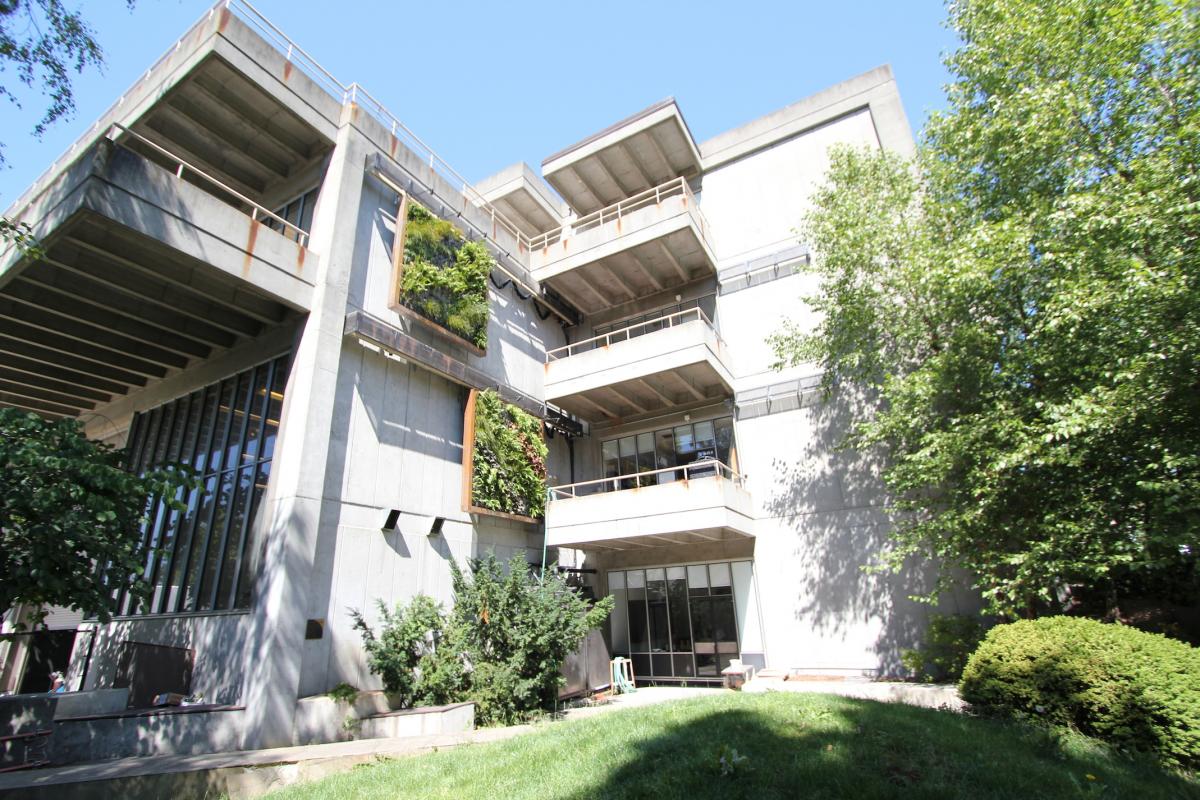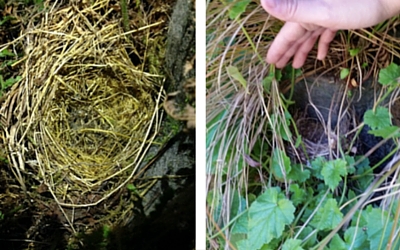
By Mishu Pham-Whipple
In 2013, a team from the Green Futures Lab in the Department of Landscape Architecture designed and oversaw construction on the UW Biodiversity Green Wall on the side of Gould Hall. Funding to build the wall was secured through the Campus Sustainability Fund (CSF), which is supported through student tuition. The wall was originally planned to be built to study the potential benefits of green walls, which include increasing biodiversity, reducing the heat island effect and reducing building energy needs, and conserving water. However because of the nature of the Campus Sustainability Fund, funding research is not permitted. The next step then was to secure funding for research once the wall itself was built. This is where the Green Seed Fund was able to support the project.
Over one year ago, the Green Seed Fund awarded the Green Futures Lab funds to conduct their intended research. By collecting data on flora, fauna, temperature, and water usage, the team - consisting of leaders Professor Nancy Rottle, PhD candidate Leann Andrews and Facilities Manager Meegan Amen and a corps of student assistants and volunteers - was able to test the validity of the theoretical benefits of the green wall. They had significant findings including bird nests in the wall made from dead plant material provided by the wall, evidence of hummingbirds taking moss from the wall to make nests elsewhere, detailed documentation of species diversity and significantly cooler temperature behind the wall than in front. The team’s research contributes to a body of knowledge around green walls that didn’t previously exist and provides evidence that green walls are significant contributors to urban biodiversity and provide potential energy and money savings.
Beyond the significance of the data collected, the process of the project itself was beneficial in educating others about the green wall, biodiversity, and sustainability. The team that designed the wall, made up faculty, staff, and some students, all from various disciplines, collaborated on the design with local construction company SolTerra, which specializes in renewable energy and sustainable construction. Another team of students were then involved in the biological research, also from a variety of backgrounds. This interdisciplinary project reached about 100 people who participated in the project, has since reached hundreds of students through classes that have incorporated the green wall into the course, and hundreds if not thousands who have seen it. The green wall and its subsequent success has been publicized by Alaska Airlines Magazine, The Seattle Times, Conservation Magazine, King 5 News, blogs, and more. The team also recently presented its findings on green walls’ promising contribution to urban biodiversity at the International Conference on Environmental, Cultural, Economic and Social Sustainability.
Although funding for the year long research project is coming to a close, the green wall will remain. The future of how the wall will be sustained is unclear, as a source for long term funding for maintenance has not been confirmed. However, the wall has significant potential to be continued to be used as a teaching tool and a source for further data collection. Regardless, the wall will continue to be an example of sustainable infrastructure that promotes urban biodiversity and may provide energy and money saving functions.
Learn more in the team's presentation to the Environmental Stewardship Committee.
 Bird nests observed in the Gould Green Wall.
Bird nests observed in the Gould Green Wall.